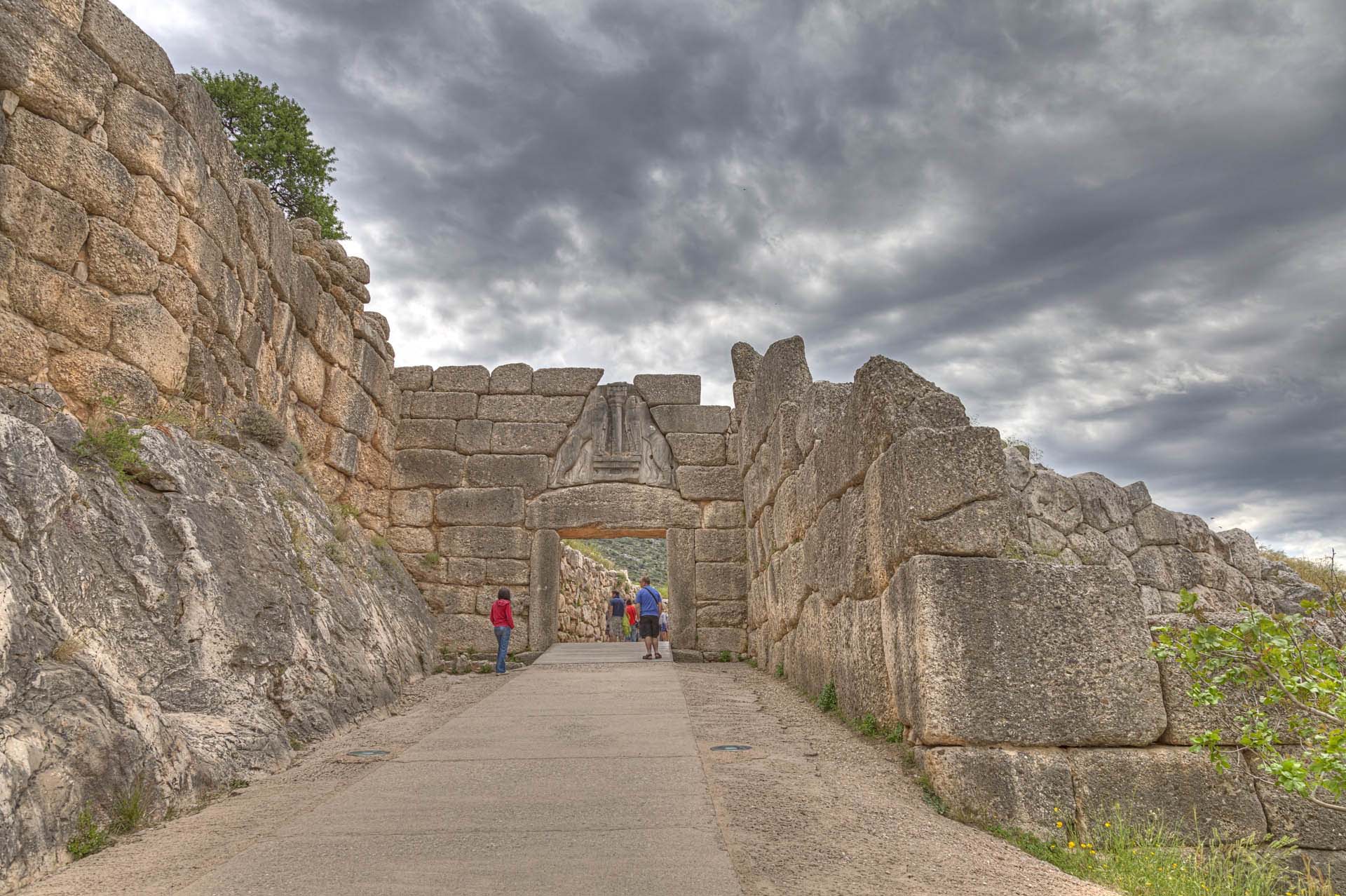
The most important, and lavish, palatial centre of the Late Bronze Age in Greece: Homer’s “gold-rich Mycenae”. According to the mythology of Ancient Greece, its founder was Perseus, son of Zeus and Danae. The myth of the Cyclops and the story of Heinrich Schliemann’s discovery of the so-called Mask of Agamemnon is fascinating, as is a tour of the archaeological site in the Peloponnese.
>What to do in Mycenae
The Cyclopean Walls
According to myth, Perseus, the founder of Mycenae, commissioned Cyclopses – huge, one-eyed mythical creatures from Asia Minor – to build the walls. Hence their name.
Lion Gate
A symbol of the power of the Mycenaean Kingdom, it’s perfectly symmetrical and unique in Europe. The main entrance to the citadel of Mycenae dates from about 1250 BC. The monument is named after the relief sculpture of two lionesses that stands above the entrance. As yet, nobody has discovered how it was constructed. So why not stick with the Cyclopses theory?
The Mask of Agamemnon
Five gold-plated masks were discovered in Mycenae by the renowned archaeologist Heinrich Schliemann, who excavated this citadel because he believed Homer’s stories. He was convinced he’d discovered the remains of King Agamemnon and named his historical findings after the famous king. More recent studies revealed that the masks were from 1500-1550 BC, nearly three centuries before Agamemnon supposedly lived. However, the name remained and the findings can now be viewed in the National Archaeological Museum of Athens.
Tomb of the House of Atreus
One of the largest and best preserved of the famous vaulted beehive tombs found in Mycenae. Since the time of the traveller and geographer Pausanias, the inhabitants of the area knew that this monument was the “treasure” of King Atreus, and today it is still known as the Treasury of Atreus, or Tomb of Agamemnon. It was looted before Pausanias got to it and for centuries before that, shepherds used it as a refuge.
The Archaeological Museum of Mycenae
The exhibition is divided into four distinct sections. You’ll learn about the history, life and activities of the Mycenaeans, their burial customs and their use of space.
>Hidden gems of Mycenae
The religious centre of the Mycenaeans
Situated on the southwest point of the citadel, this building complex was created for religious purposes. Aside from the existence of architectural elements supporting this, artefacts used in religious ceremonies have also been found here.
Palace on high
It stands at the highest point of the citadel, built on man-made terraces.
Grave Circle B
Located on the west side of the citadel of Mycenae, this burial complex is one of the most important monuments in the area and in Ancient Greece, giving us insight into Mycenaean funeral architecture and burial customs. It hosts a total of 26 graves and dates back to about 1650-1550 BC. Among these, six of the shaft graves belonged to the ruling family and rich ornaments were unearthed, including a death mask made of electrum.
Source: https://www.discovergreece.com






